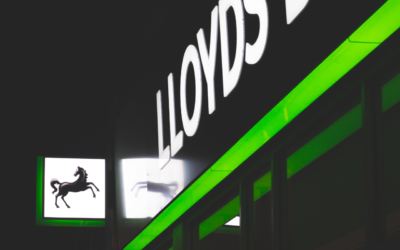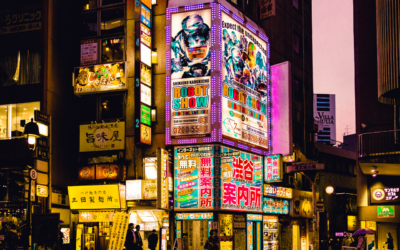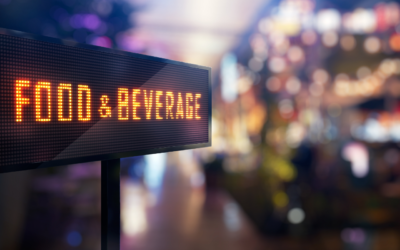Large-scale events, such as conferences, trade shows, music festivals, and sports games, attract thousands of attendees. With so many people navigating an unfamiliar venue, clear and effective directional signage is essential. When event organizers invest in high-quality signage, they enhance the attendee experience, improve traffic flow, and reduce confusion. Whether guiding attendees to restrooms, food vendors, exits, or specific event zones, well-placed directional signage helps create a seamless and enjoyable experience.
Key Takeaways:
- Directional signage enhances customer experience by making large venues easier to navigate.
- Strategic placement of signage reduces congestion and keeps attendees moving efficiently.
- Branded signage reinforces event identity and improves engagement.
- High-quality materials ensure readability in various lighting and weather conditions.
- Professional signage providers create customized solutions for different event needs.
The Importance of Directional Signage at Large Events
Directional signage serves a critical role at large events by ensuring that attendees can move effortlessly throughout the venue. Without clear signage, guests may become frustrated, miss key attractions, or experience delays that diminish their overall satisfaction. Here are some key reasons why directional signage is essential:
1. Enhances Navigation and Wayfinding
Attendees unfamiliar with the event layout rely on signage to guide them to different areas, including entrances, exits, seating sections, restrooms, and food courts. Effective signage prevents confusion and ensures that guests spend less time searching for their destination and more time enjoying the event.
2. Reduces Congestion and Improves Crowd Control
Large crowds can create bottlenecks in high-traffic areas. Clear signage directing foot traffic prevents overcrowding and helps disperse attendees evenly throughout the venue. Signs indicating alternative pathways, secondary exits, or less crowded sections can make movement more efficient and reduce wait times.
3. Improves Safety and Emergency Response
Emergency preparedness is a priority at large events. Directional signage should include clearly marked emergency exits, first aid stations, and security checkpoints. Well-placed signage ensures that attendees can quickly locate these essential areas in case of an emergency, reducing panic and improving overall safety.
4. Strengthens Event Branding and Sponsorship Opportunities
Branded directional signage creates a cohesive event experience by incorporating logos, color schemes, and fonts that align with the event’s identity. Additionally, signage presents sponsorship opportunities, where businesses can place their branding on directional signs, increasing visibility and engagement.
5. Increases Vendor and Sponsor Visibility
For events with multiple vendors, signage plays a key role in directing foot traffic to specific booths or exhibit areas. Clearly marked zones for food and beverage stations, merchandise stands, or sponsored exhibits help businesses attract attendees and maximize sales opportunities.
Best Practices for Effective Directional Signage
To maximize the impact of directional signage, event organizers should follow best practices in design, placement, and messaging.
1. Use Clear and Concise Messaging
Directional signs should be easy to read and understand. Avoid excessive text and opt for simple, action-oriented phrases like “Main Entrance,” “Restrooms This Way,” or “Exit Ahead.” Including universally recognized symbols or icons can further enhance clarity.
2. Ensure High Visibility
Signs should be large enough to be seen from a distance and placed at eye level or above for easy visibility. High-contrast colors and bold fonts improve legibility, even in crowded or low-light environments.
3. Strategically Place Signage in Key Locations
The most effective signage is positioned at decision points—entrances, intersections, stairways, and escalators—where attendees need guidance. Placing signs too far from the decision point may lead to confusion or missed directions.
4. Consider Digital Signage for Flexibility
For large-scale events with changing schedules, digital directional signage offers real-time updates. These screens can display rotating messages, event schedules, and emergency notifications, providing a more dynamic experience.
5. Use Durable and Weather-Resistant Materials
For outdoor events, signage should be made of durable materials that withstand wind, rain, and direct sunlight. Sturdy, high-quality materials prevent signs from fading, falling, or becoming unreadable over time.
6. Include Multilingual and Accessible Signage
Events that attract diverse audiences should consider multilingual signage to accommodate non-English speakers. Additionally, accessibility features, such as Braille, large text, and clear pictograms, make signage more inclusive for attendees with disabilities.
Frequently Asked Questions
1. What type of signage is best for large events?
A combination of static, digital, and floor signage works best. Static signage provides clear, permanent directions, while digital signs offer real-time updates. Floor decals help guide foot traffic in high-density areas.
2. How can signage improve the experience for attendees with disabilities?
ADA-compliant signage includes Braille, high-contrast colors, and large fonts for readability. Additionally, accessible pathways and ramps should be clearly marked to assist individuals with mobility challenges.
3. Where should directional signs be placed for maximum impact?
Key locations include entry and exit points, restrooms, food courts, transportation areas, seating sections, and emergency exits. Placing signage at intersections or high-traffic areas ensures attendees receive directions before reaching a decision point.
4. Can directional signage be customized to match event branding?
Yes, signage can be customized with event logos, colors, and themes. Branded signage enhances the overall event experience and reinforces brand identity.
5. How early should event organizers plan their signage strategy?
Ideally, directional signage should be planned during the event layout design phase. This allows organizers to identify key areas needing signage and work with professional signage providers to create customized solutions.
6. What are the benefits of digital signage over traditional signage?
Digital signage allows for real-time updates, making it ideal for events with changing schedules or locations. It also offers interactive capabilities, such as touchscreens and QR codes, to provide additional event information.
Enhance Your Event with Professional Signage from Attention Getters
Effective directional signage is a crucial element of large event planning, significantly improving the attendee experience, enhancing safety, and streamlining crowd movement. Whether directing guests to key locations, reinforcing event branding, or providing emergency guidance, well-designed signage ensures a seamless experience for all attendees.
For high-quality, customized directional signage that enhances event operations, consider working with Attention Getters. As a leader in professional signage solutions, the company offers durable, visually appealing, and strategically designed signage to meet event needs. Contact Attention Getters today to create a signage plan that improves customer experience at your next large event.




